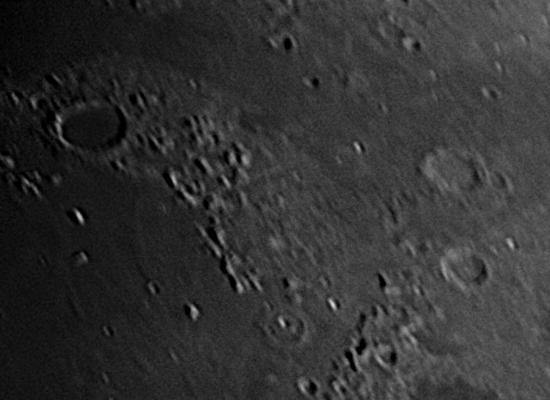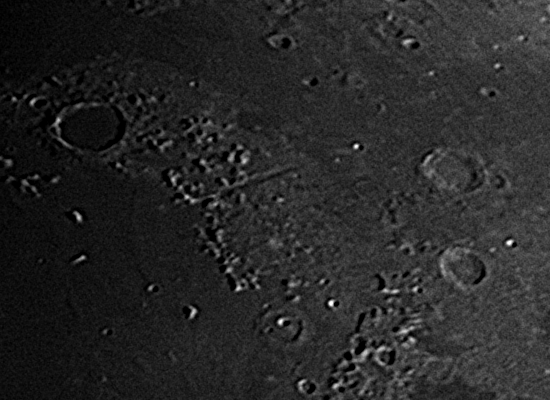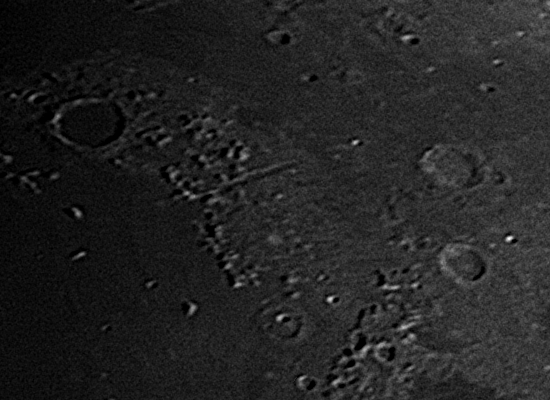I was struggling a few days ago with some images I’d taken of the Moon because they looked really poor after stacking and sharpening. I’d been experimenting, trying to get a better histogram fill for the images by increasing the exposure time, but instead I was getting “double vision” images with ghosting of many features. Eventually I realised that the reason the images looked awful was that the exposure was too long and the atmosphere was distorting subs sufficiently that several different copies of the same features were showing up in the stack.
Last night I deliberately repeated the process using exposures of 1/500th, 1/1000th and 1/1250th all at ISO800 with the 450D and 127 Mak. I took 120 exposures of each, stacked them using the same parameters in Registax v6 having picked the best reference frame I could and then applied the same wavelets settings to each. During the time I captured the images there was no obvious change in the seeing that I could determine. I’ve taken some crops to illustrate the differences.
First, 1/500th
And 1/1000th:
And finally, 1/1250th:
There’s a world of difference between the 1/500th second and 1/1000th second images which quite surprised me. Clearly 1/1000th is the better choice of the two there. By 1/1250th however I think the ISO setting is insufficient to make up for the faster shutter speed and whilst they’re very similar I think I’d say there’s slightly better definition in the 1/1000th image and for the moment at least I think that’s what I shall be working with for my lunar images.



